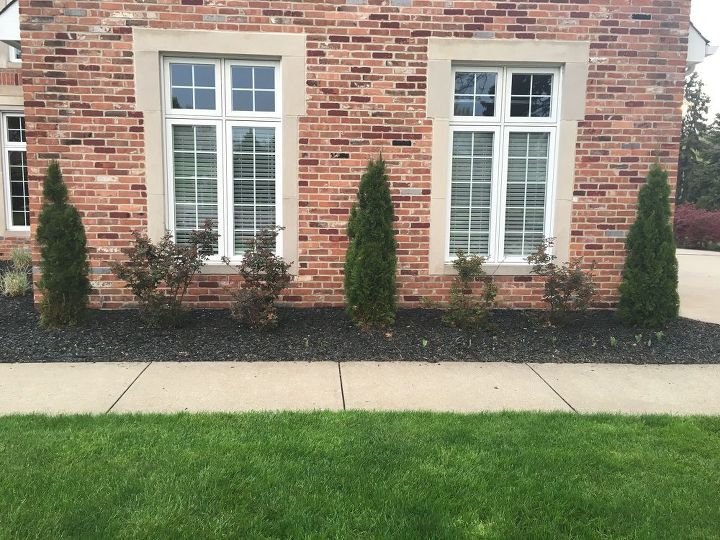Does an amorallis bloom more then once a season
Wondering if anyone knows how to plant amaryllis bulbs in pots and how often they bloom?
Related Discussions
GNATS - How to get rid of them?
Somehow my house and garden got tiny gnats that killed my fuchsia plant and fly everywhere. I have tried ALL the Web recommendations - soap and oil dishes, sand in th... See more
Marigolds growing! Should I pinch the buds?
My marigold plants are growing. I heard that pinching the buds until Autumn will allow them to grow without killing the plant. Is this true?
Growing garlic
Growing our first garlic, should we wait until the leaves are drying out before we pick it? Husband picked first one today along with our first potatoes.
How to keep mice out of your garden?
Hi everyone, I have mice in my garden destroying my vegetables and I have also noticed them in the barn and shed. Please can someone tell me how to prevent them from ... See more
What's the best flower/plant to grow in Texas?
I know that opinions vary, but what's your opinion?!I have great luck w Rosemary plants. Green all year long.
Which annual flowers make a colorful border for my house?
This year I am going to plant a colorful border using annuals. What annuals have you used or do you recommend for a border? The area is full to part sun. I am not ... See more
Is it safe to replant peony?
I've heard it might be tricky. Is it true? What is the best way to that? It's this year's plant. No flowers yet.





Mine never has but it keep growing and then bloomed again about 6 months later.
same thing as orchids!
https://ahappyhomeinholland.com/2017/02/how-to-get-an-amaryllis-to-flower-again.html/
Reblooming Amaryllis James C. Schmidt, Horticulturist University of Illinois The stately amaryllis provides a bright accent for the flower window in late winter and early spring, and its short blooming season and scant foliage are more than compensated for its easy culture. Keep blooming plants in a relatively cool, humid location to enhance the lasting quality of the flowers. Bright light isn’t too important, since there is little foliage at the time of flowering. Adequate watering, however, is necessary. The secret to getting amaryllis bulbs to rebloom year after year lies largely in summer care after flowering. Remove the faded flowers and stalks as soon as they are finished blooming but do not cut off the leaves. Set the pot on a sunny windowsill and water as needed. When warm weather arrives in May and all danger of frost is passed, set the bulb, container and all, in the flower garden. Choose a location that is somewhat protected and receives morning light. You can set the pot in the ground so that the rim is at ground level. When first planted, the leaves will flop over, but after awhile, more leaves will form and these will be more upright. During the summer, continue to water the plant as needed and feed it every two weeks with a soluble houseplant fertilizer. Follow the directions on the label. This will help produce a strong, healthy bulb. Gradually withhold water before freezing weather in the fall. When the foliage has died down, trim it off and take the pots to a cool, dark basement (40o to 50 o F if possible) and place them on their sides. The bulb needs to sit and rest for six weeks before you try to rebloom it. Since it takes approximately six weeks from planting to bloom time, you can decide when you want the bloom to occur and then count backward to determine the planting time. During the rest period do not water it. As the leaves dry, cut them off. After the rest period and when you are ready to force it into bloom, repot the bulb into another pot using a soil mixture of one part soil, one part peat moss, and one part perlite or vermiculite. The pot you choose should be of clay rather than plastic since the amaryllis tends to get top heavy and can tip over when blooming. Set the bulb so that one-third to one-half of it is above the top of the soil. Press the soil gently but firmly around the bulb to help it settle. After planting the bulb, water the soil thoroughly and let the excess water drain. Place the container in a warm, sunny location. Try to keep it in a warm room where the temperature ranges between 55 and 65 degrees F. Warmer temperatures may result in weak, floppy growth. Keep the soil moist but not overly wet. Usually the first year you plant a purchased bulb, the flower stalk shoots up first and the leaves appear later. The second year, leaves may appear first or the leaves and flowers may appear at the same time. When purchasing new bulbs, select large, plump specimens that are free of rot or mold. For good flowering the first season, they should be at least 2 1/2 inches in diameter. Amaryllis bulbs are usually potted up from October through January. It is best to keep the soil on the dry side until growth appears. Flowers up to 8 inches in diameter will be the reward – and just a few weeks after planting. A top-grade bulb should produce two flower stalks with at least four flowers on each. Insects and diseases are seldom a problem with this aristocrat of tender bulbs.